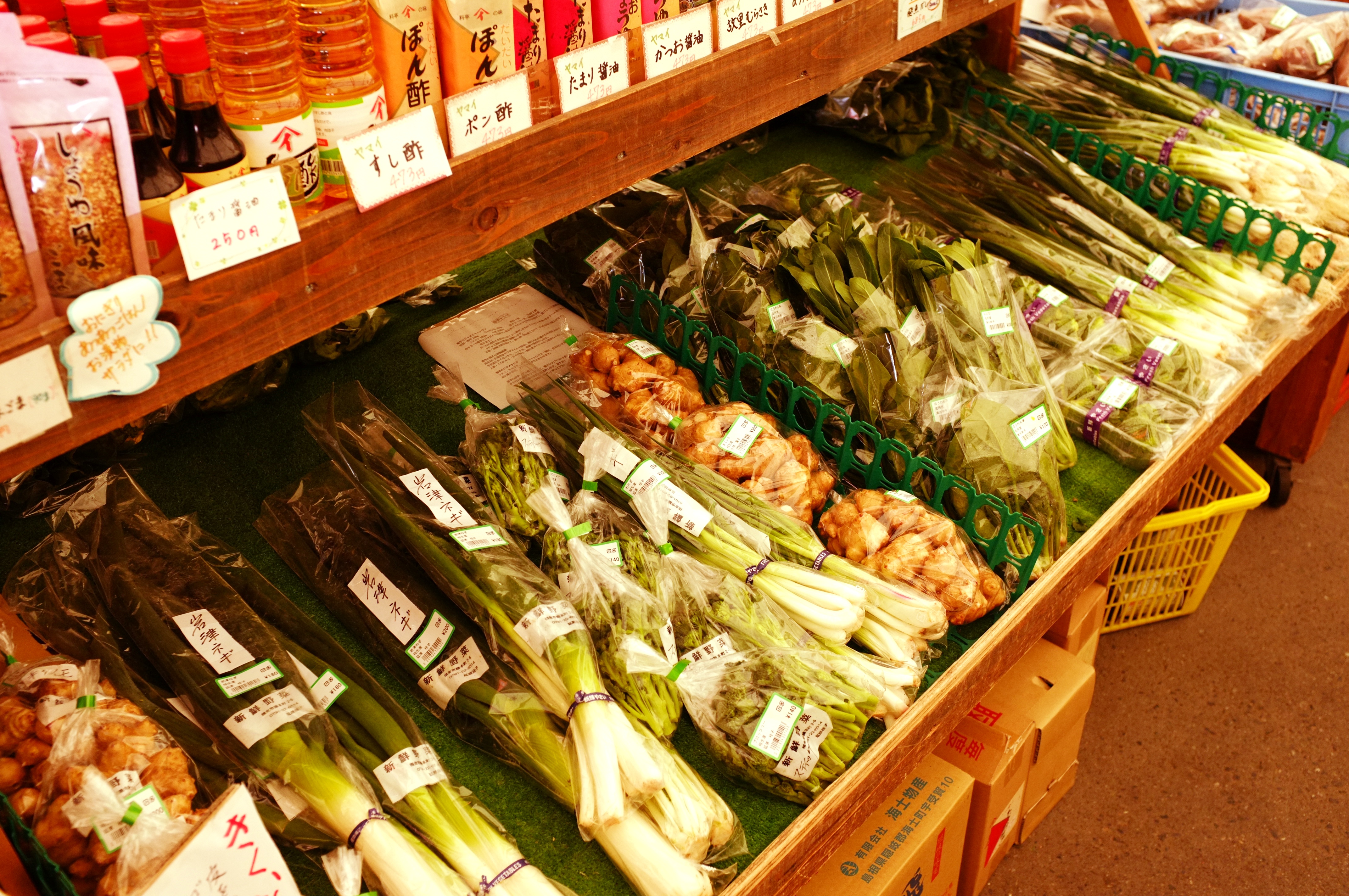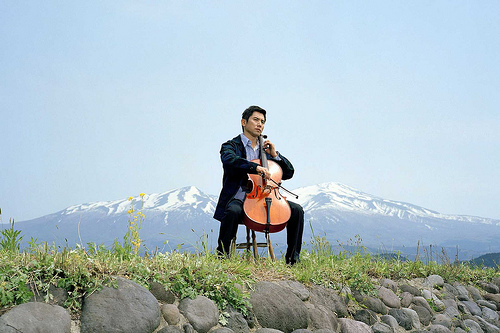Miso Green: The Hyogo Local Grocers Project
Once, a few years ago, another friend of the eco-friendly prerogative asked me which I would rather pay for, organic food or local food. My instant reaction was to say local. When comparing the carbon footprints of organic food that was transported from a far-off place to local food grown using non-natural fertilizers and insecticides, they probably equal out. But local food sends the better message: it supports the local economy and establishes an appreciation for eating seasonal and truly fresh foods.
But while I can say I’d buy local first, I’m not a stickler about it for two reasons. First off, some locales are not ideal for growing certain foods. Living in Alaska for two years before moving to Japan, I was only provided with local berries and game meat, not the greatest options for a well-rounded diet, let alone a vegetarian’s. Needless to say, the majority of what I ate was shipped from the other side of the planet. No roads came in or out of my town, and I feared the day when a barge wouldn’t show up for some reason and I’d starve to death.
The other problem is that I was a picky eater growing up, and only upon starting college did I begin to experiment with new flavors and cuisines beyond the typical American finicky-kid diet of grilled cheese and spaghetti. I had never eaten an olive before I was 24. Today, I can mindlessly polish off a jar in a matter of minutes. My mind still craves this variety.
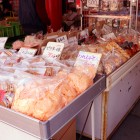          Therefore, while many jars of Spanish olives and blocks of American cheese are likely to appear in my future in this country, I can still buy the majority of my groceries locally. I am lucky to live in semi-rural Aioi, for it is full of farming families that pack the local farmer’s market with stuff from their backyards. Not just that, but I can also procure locally-produced ice cream, tofu, honey, noodles, and so much more. Slowly I’m learning the beauty of eating and cooking seasonally, and the many detriments that come along with buying foods from unknown or far-off sources.
         Therefore, while many jars of Spanish olives and blocks of American cheese are likely to appear in my future in this country, I can still buy the majority of my groceries locally. I am lucky to live in semi-rural Aioi, for it is full of farming families that pack the local farmer’s market with stuff from their backyards. Not just that, but I can also procure locally-produced ice cream, tofu, honey, noodles, and so much more. Slowly I’m learning the beauty of eating and cooking seasonally, and the many detriments that come along with buying foods from unknown or far-off sources.
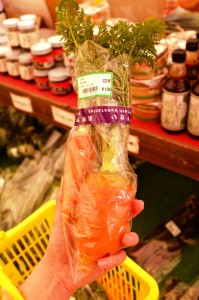            Many JETs have told me about their woes in trying to find local produce. The truth is, it’s EVERYWHERE, but there are a slew of terms to wade through before you can even know where to search for local foods. First, let’s talk about package labeling. Here are terms that concern hippie-folk:
           Many JETs have told me about their woes in trying to find local produce. The truth is, it’s EVERYWHERE, but there are a slew of terms to wade through before you can even know where to search for local foods. First, let’s talk about package labeling. Here are terms that concern hippie-folk:
éºä¼å組ã¿æ›ãˆã§ãªã„ (idenshi kumikae denai) Non-GMO: Unlike in the US, there are regulations regarding the labeling of foods that utilize genetically-modified ingredients in Japan. If a product contains more than 5% total mass of ingredients derived from genetically-modified crops, Japanese law requires that information to be noted on the label. However, most foods that don’t utilize GM ingredients voluntarily specify so, using the term above, in their ingredients lists to make their products appealing. The most common GMOs used in food products are corn, canola, and soybeans. If, next to these foods in the ingredients list, the product doesn’t specify one way or the other, one might assume that between 0 and 5% of the ingredients comes from genetically-modified sources, though this rule of thumb probably applies to more widely commercially produced goods than it does to goods from your local farmer.
ç„¡æ·»åŠ (mutenka) No additives: This is usually included on the labeling of processed foods, such as miso, that do not use any artificial additives or preservatives.
有機(yÅ«ki)ï¼ã‚ªãƒ¼ã‚¬ãƒ‹ãƒƒã‚¯Organic: The kanji term is slightly more common. When you buy from a farmer, it’s important to remember that you are not necessarily buying organic food. There is great interest in Japan in permaculture and sustainability, and many farmers utilize these techniques to minimize their pesticide and fertilizer usage, but are keeping things so small that there is little point in getting organic-certified. I’m willing to trust what my genki elderly neighbors are eating. Here are more specific terms to look for instead:
無農薬(munÅyaku) No pesticides: This probably means that farmers use natural means to keep their plants pest-free, perhaps by using soaps as pesticides or keeping ducks in their rice paddies to keep the insect population down.
有機肥料 (yÅ«ki hiryÅ) Organic fertilizers: Many markets will also proudly tout their use of EM (aka bokashi) as a fertilizing agent!
Now that you are familiar with what types of food to look for, let’s introduce the myriad types of marketplaces for purchasing local groceries
ファーマーズ・マーケットFarmer’s Market: Really, this is a catch-all term that probably won’t lead you to the kind of farmer’s market you’re looking for (some offer the exact opposite of regionally grown food, in fact). In searching or asking around, try one of the terms below instead:
特産å“店(tokusanshÅten) Specialty Shops: Specialty shops typically sell all kinds of å物, or famed goods, from your area. They might range from souvenir shops to grocery stores to seafood markets, and likewise fluctuate in price, but they are guaranteed to carry products that have been produced locally.
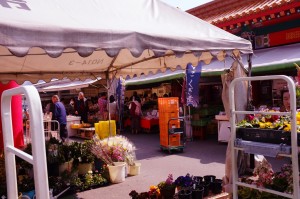 æœå¸‚(asaichi) Morning Market: As the name suggests, these are produce markets that operate for half-days or less. While they typically carry quality fruits and veggies, and the person that pulled them out of the ground will likely be the person you hand your money to, morning markets usually operate on irregular days and, even on weekends, are often too early for JET-folk to make it to.
æœå¸‚(asaichi) Morning Market: As the name suggests, these are produce markets that operate for half-days or less. While they typically carry quality fruits and veggies, and the person that pulled them out of the ground will likely be the person you hand your money to, morning markets usually operate on irregular days and, even on weekends, are often too early for JET-folk to make it to.
インショップIn-Shop vendors: Especially in larger cities, one can’t expect to find stores entirely dedicated to local foods. As a result, there are many areas that have “in-shops,†where local sellers can corner off their goods for purchase. In Hyogo, we can find many in-shops in A-Coops (the JA-run supermarket) as well as some MaxValus in the Kobe area, and the occasional department store. Goods from in-shop vendors are rather inconsistent: some carry local specialty products while others focus on produce, but either way, they’re probably worth a browse!
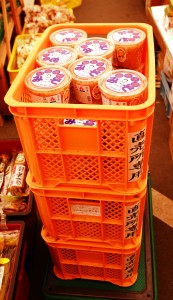 直売所(chokubaisho) Farmer-Direct Sellers: If you’re looking for local produce as well as locally produced packaged foods, a chokubaisho is probably your best bet. These places purchase products directly from farmers and sell them en masse in one large store without the price hikes caused by distributors. Chokubaisho are everywhere, but you can often find them attached to these two terms:
直売所(chokubaisho) Farmer-Direct Sellers: If you’re looking for local produce as well as locally produced packaged foods, a chokubaisho is probably your best bet. These places purchase products directly from farmers and sell them en masse in one large store without the price hikes caused by distributors. Chokubaisho are everywhere, but you can often find them attached to these two terms:
JAグループ: Central Union of Agriculture Cooperativea: This is the major agricultural organization of Japan. It doesn’t seem to be a union, but it does have many area-specific chapters that farmers pay dues towards to promote local agriculture. These local JA chapters organize many of the chokubaisho in Hyogo.
é“ã®é§…(michi no eki) Rest stops: The network of highway rest stops in Hyogo also serve as chokubaisho, although many carry primarily packaged local goods. My nearest michi no eki is the primary greengrocer for my household.
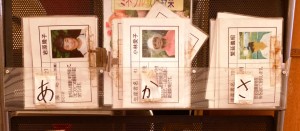
After researching all of this, I’ve decided to create a map with English information, called “The Hyogo Local Grocers Project,†based on the information I could find in Japanese. However, as much as I’d enjoy researching and reviewing these markets in English, wouldn’t it defeat the purpose to visit markets out of my own area? Here’s a compromise: I’ll check out and report about the markets near me if you do the same. I’d love to start featuring especially impressive markets in this column, as well as update the map with English reviews and more specific basic information, so if you find anything especially interesting, drop a line with your thoughts on it!
Uluwehi Mills
miso.green.ht@gmail.com
